Hi there!
To all our new colleagues we make a short explanation of how the aircraft works in terms of onboard equipment. And now we have decided to arrange all these "lectures" in printed form for everyone.
Please find hereunder our first story describing how a modern airliner engine works.
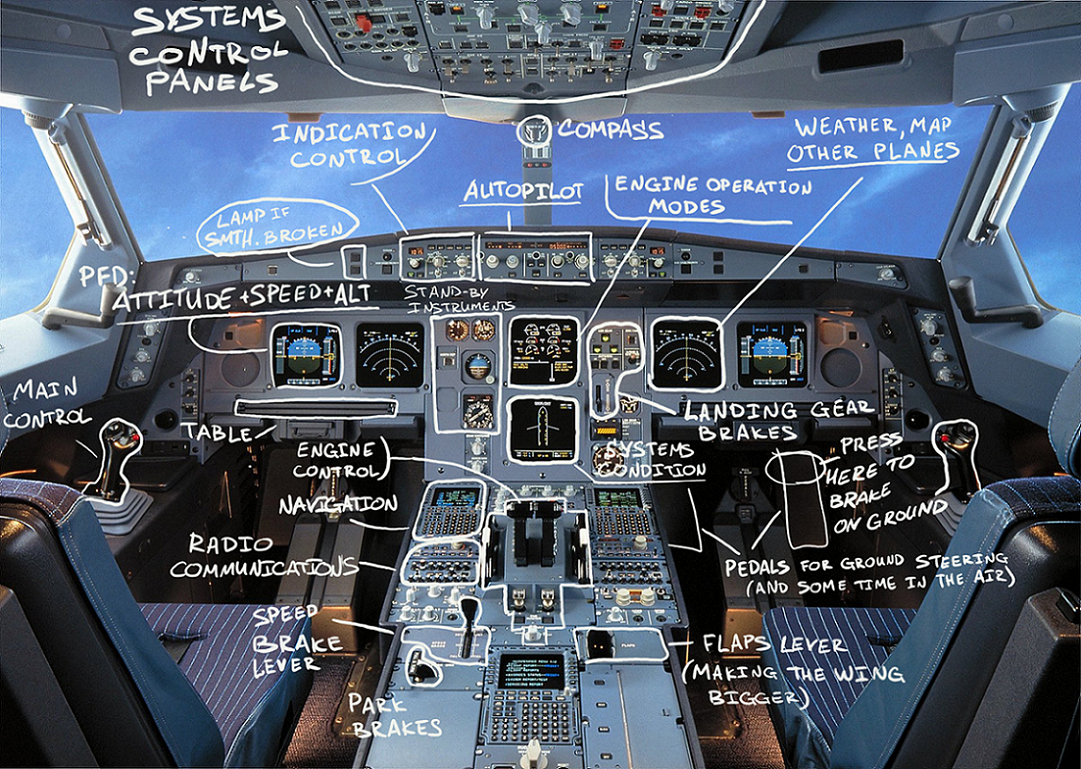
The power plant is a general name for aircraft engines. We’re going to start with them because without an engine there is no aircraft – that would be a sailplane at the most. The price of an engine in fact comprises half of the airliner price, and much less countries have competencies for designing modern aircraft engines for civilian application than countries that have competencies for designing aircrafts.
Modern airliners almost exclusively run on turbofan engines. Here is the schematic of this engine type:
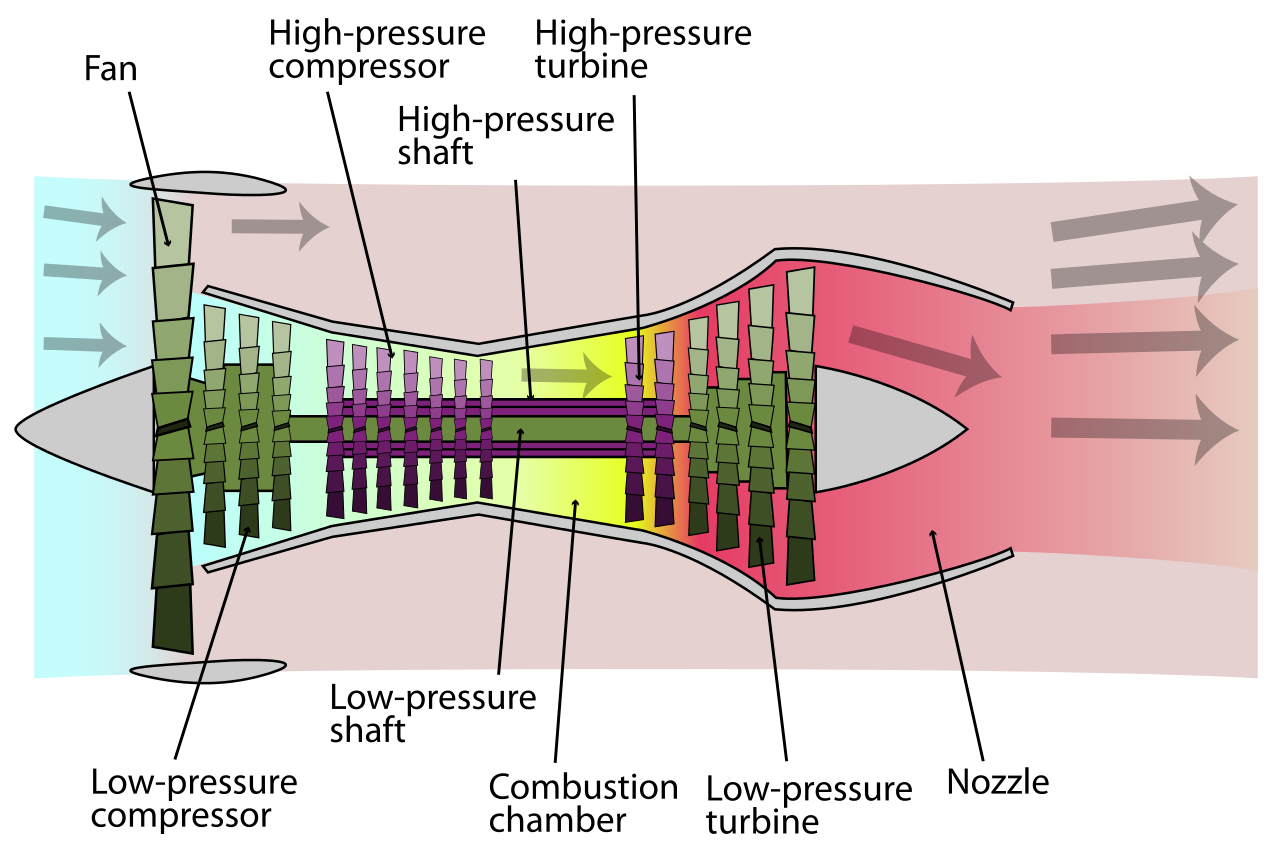
You can find detailed design description on multiple platforms, including Wikipedia. For us, electronics engineers, it’s crucial to know the following facts about such engine’s functionality:
The compressor compresses air sucked from the outside before it enters the combustion chamber
In the combustion chamber, air is mixed with the fuel
This fuel-air mixture is constantly combusted in the combustion chamber which causes the heated gas to expand towards the turbine
The turbine spins driven by expanding gases and rotates the compressor and/or fan
Normally engines have two turbine/compressor shafts - high and low pressure. They can spin independently
Oddly enough, thrust is mostly enabled not by the hot gas coming out of the nozzle, but by fan rotation
Engine speed and thrust can be adjusted through fuel supply
Most modern aircraft engines are controlled by a special FADEC computer. This tool analyzes engine parameters, ambient conditions and control signals coming from control panels, and manages all drives that affect engine performance, e.g. fuel cock. The "Full Authority" bit means that:
In addition to control panel signals, FADEC also analyzes data from:
Landing gear sensors (WOW), to additionally enable switching to reverse.
WOW means that an aircraft is not flying with its full weight on the wings, but stands/moves on the ground with its weight on the landing gear. At the same time, the gear is being compressed and special "WOW sensors" detect it. It’s critical to understand that the wheels touching the runway and landing gear compressing are two different things.
Key parameter limiting the engine power is the temperature of gases exiting the combustion chamber. Engine designers would like to increase it, however, the fundamental properties of known materials do not allow it at the moment.
To start an engine, you need to spin the high-pressure turbine, feed fuel, and create the ignition spark. Once the turbine has spun up to about 50% rotation speed, the engine will start spinning by itself.
Engine spinning can be initiated with an electric starter-generator (for small engines) or by intentionally feeding high-pressure air from the pneumatic system. By the way, high pressure air in the pneumatic system is taken from the second (already running) engine, auxiliary power unit (APU) or an external source.
APU is a small gas turbine engine – compared to the main ones, of course – designed to generate power and pressure in hydraulic systems and high-pressure air to start up main engines. It’s smaller and easier to launch with an electric engine using batteries. And then you can use it to spin up big engines. It’s also used when technicians need to work with the equipment, and it’s unfeasible to launch large engines as a power source. We’ll talk more about APU next time.
Here’s an example of a control panel used to start an engine:
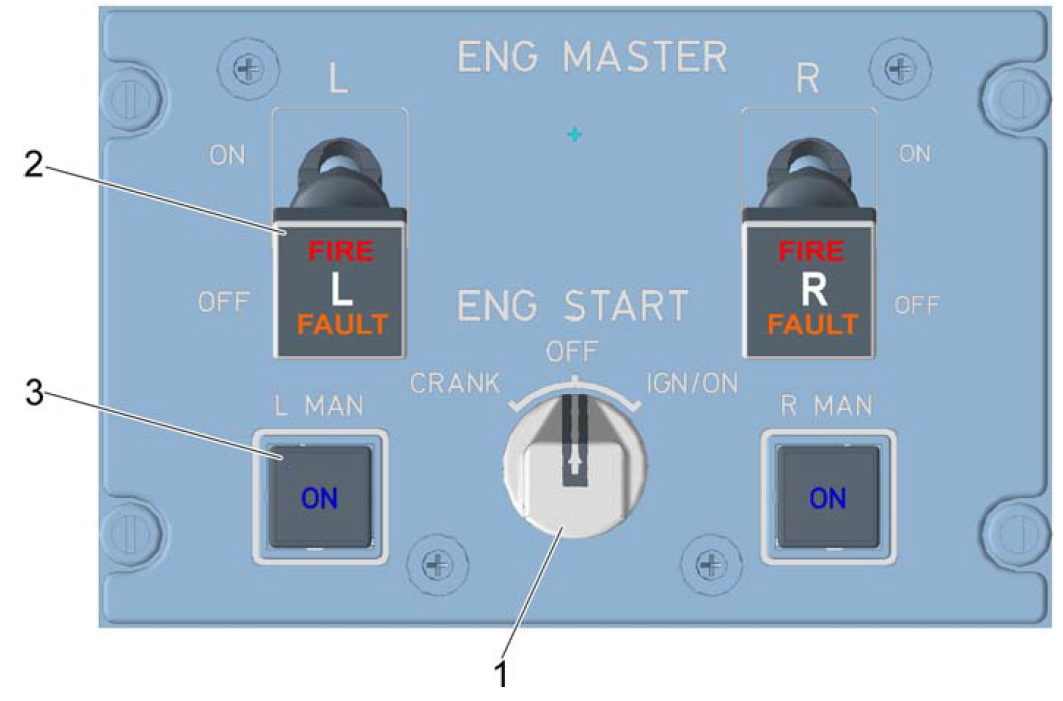
For automatic startup follow instructions below:
Set “ENG START” switch (1) to “IGN/ON”
Set “ENG MASTER” switch (2) to “ON”. As you do this, FADEC will:
Monitor the startup process. If something goes wrong, immediately turn the start switch back to “OFF”.
When the engine has successfully reached idle rotation speed, start the second engine following the same procedure
When both engines are running, set “ENG START” switch to “OFF” — during normal engine operation there’s no need for additional sparks for spark plugs
You don’t need to use manual launch buttons (3) in case of automatic engine startup
Sometimes we just need to rotate the engine without starting it. For example, when we need to check it or “rinse" its internal parts with kerosene after preservation. In this case, set “ENG START” switch to “CRANK”. The entire startup procedure will be the same, but there will be no spark for the spark plugs. No spark, no fire.
Engines are controlled with thrust (control) levers.
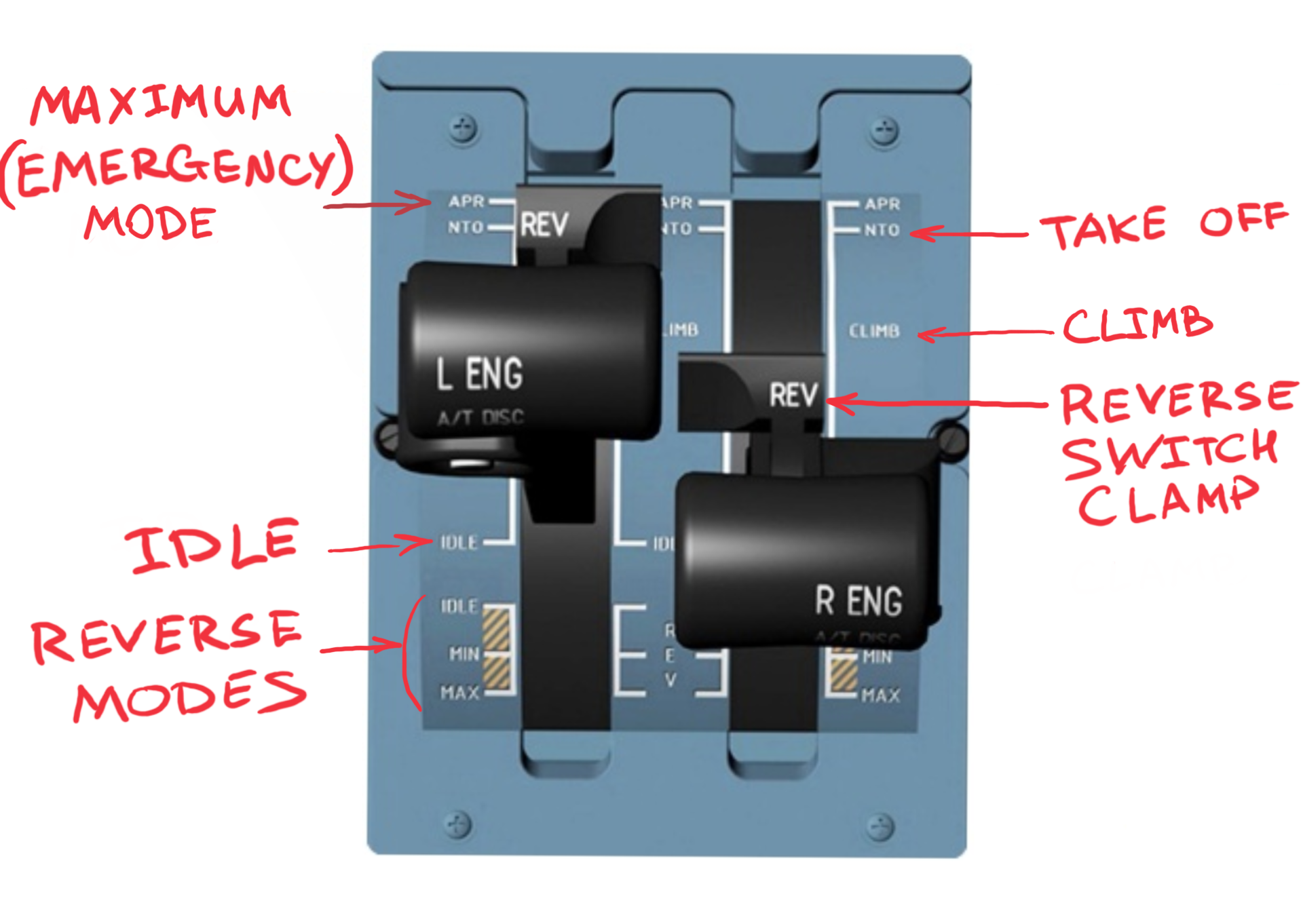
Every engine has its own lever. That’s actually quite simple: When you push the lever away, the engine starts spinning faster and the thrust increases; when you pull the lever on, rotation slows down. Since the thrust lever is not directly connected to the fuel throttle, you don’t have to be afraid of burning the engine with too much or “killing” it with too little fuel. FADEC will in no case allow it to exceed the maximum exhaust gas temperature or shut off. By the way, exhaust temperature limitation explains the fact that the engine might demonstrate lower thrust when the weather is hot and/or at high-level aerodromes.
The lever stop is positioned near the idle. To enable levers’ movement in the reverse mode direction, pull the special bracket. When the engine is reversed, buckets reverse the engine fan flow helping the aircraft to stop:
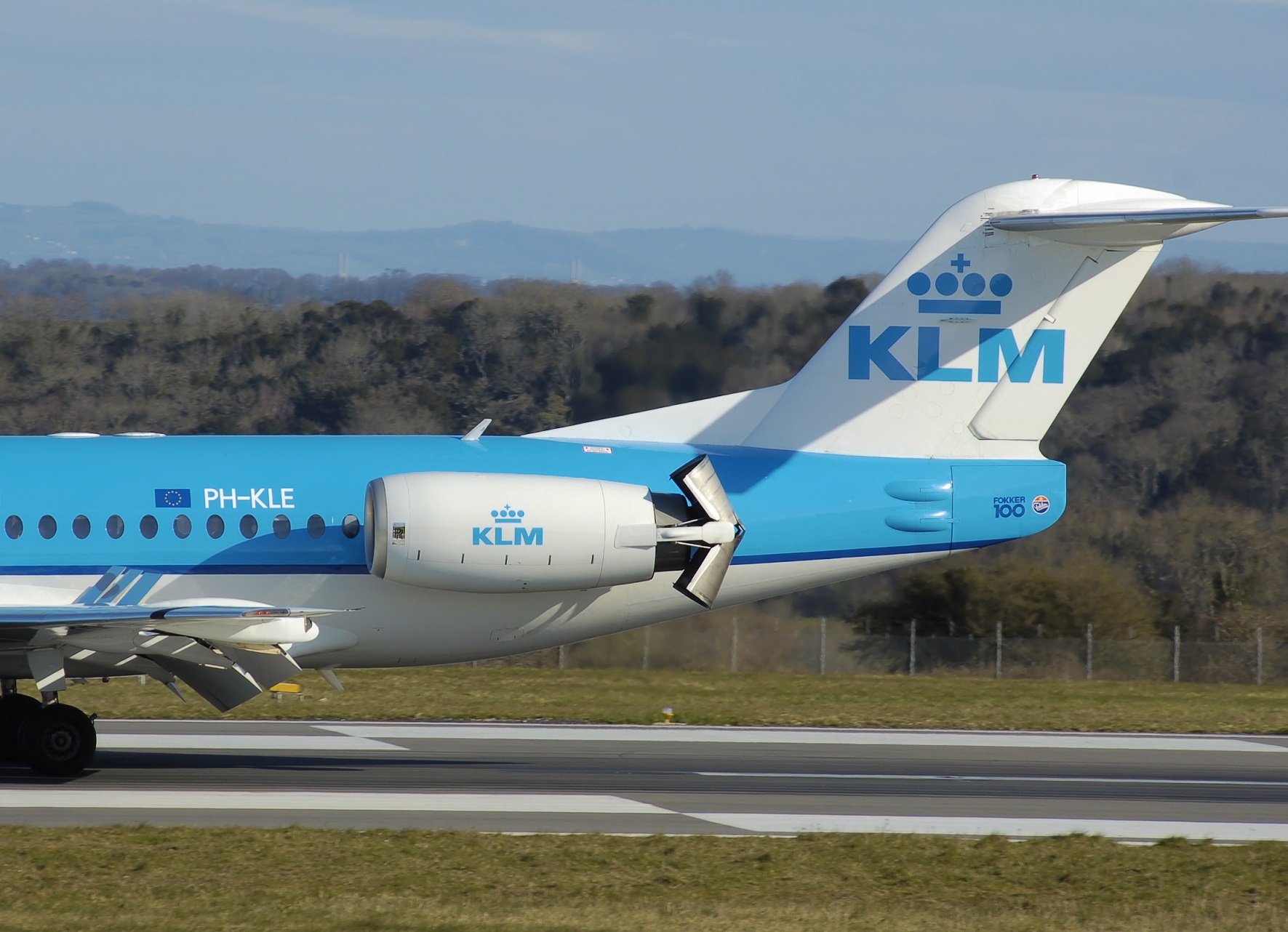
Generally, reverse mode can be used to even make the plane move in reverse; however in this case engines located under the wing might suck in litter or even stones from the runway, so it’s not recommended to use reverse mode for airliners at low speeds.
To switch to reverse mode, FADEC analyzes not only thrust lever positions, but also landing gear compression sensors, so it’s quite impossible to accidentally switch to reverse mode when flying.
Also, engines have a special "emergency" mode. You can switch it on by forcing thrust levers further than the takeoff mode mark (marked APR — Automatic Power Reserve — on the picture). This mode is only used if one of the engines fails during takeoff, when you need to ensure the climb at the expense of the running engine. But you will most certainly have to overhaul the engine used in emergency mode after landing.
Engine performance data are usually displayed on the “always-on” section of the central pilot display and on the special advanced engine data page.
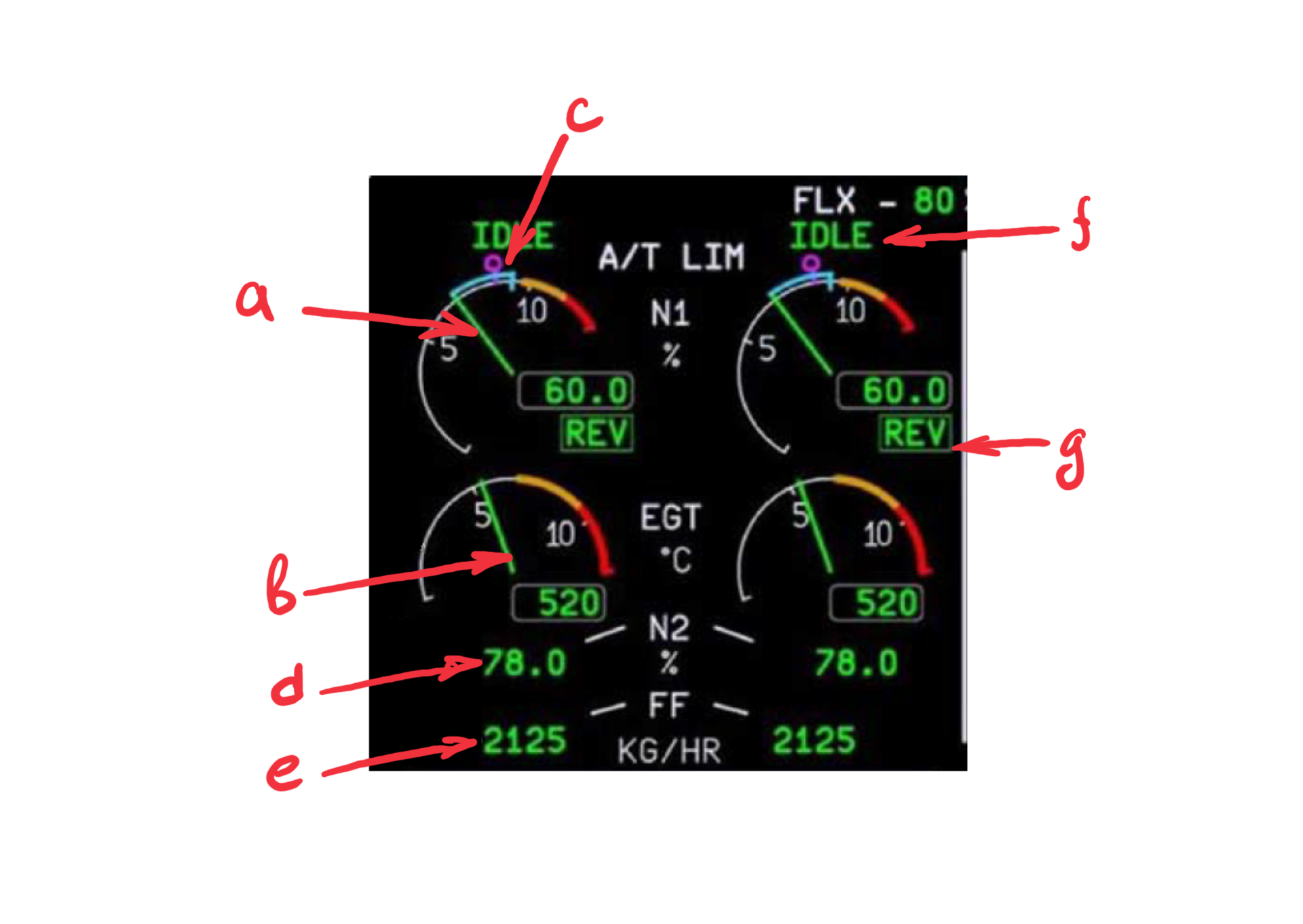
The “always on” engine performance status window shows the following data:
a. Current engine fan speed (directly affects thrust)
b. Exhaust temperature which is an engine performance parameter that often limits maximum thrust. FADEC limits fuel flow, among other things, to prevent the turbine blade units from melting. It’s also important for the pilot to understand why rotation speed does not increase, although he or she is “pushing for it”
c. Target engine fan speed (engine acceleration from idle to takeoff takes dozens of seconds and current speed does not always correspond to the target speed)
d. High pressure turbine speed. As you might remember, we have two turbines functioning independently. So high pressure turbine speed information is important when starting up the engine. You don't have to monitor such data during the flight
e. Current fuel consumption
f. Signs of reverse mode being on
g. Current engine operation mode (idle, takeoff, climbing)
There’s a special page for engine performance additional parameters that may display information such as:
Engines with fans outside the nacelle (engine bodycase) are called turboprop engines. They demonstrate better takeoff and landing characteristics; however their efficiency drops dramatically when the speed increases above 0.5 sound velocity (approximately). As a result, they’re mostly used in aircrafts for local airlines and military troop-carrier aviation, where the ability to use short and poorly conditioned runways matters more than cruising speed. Such engines are often designed with a low range transmission as indicated in the figure below.
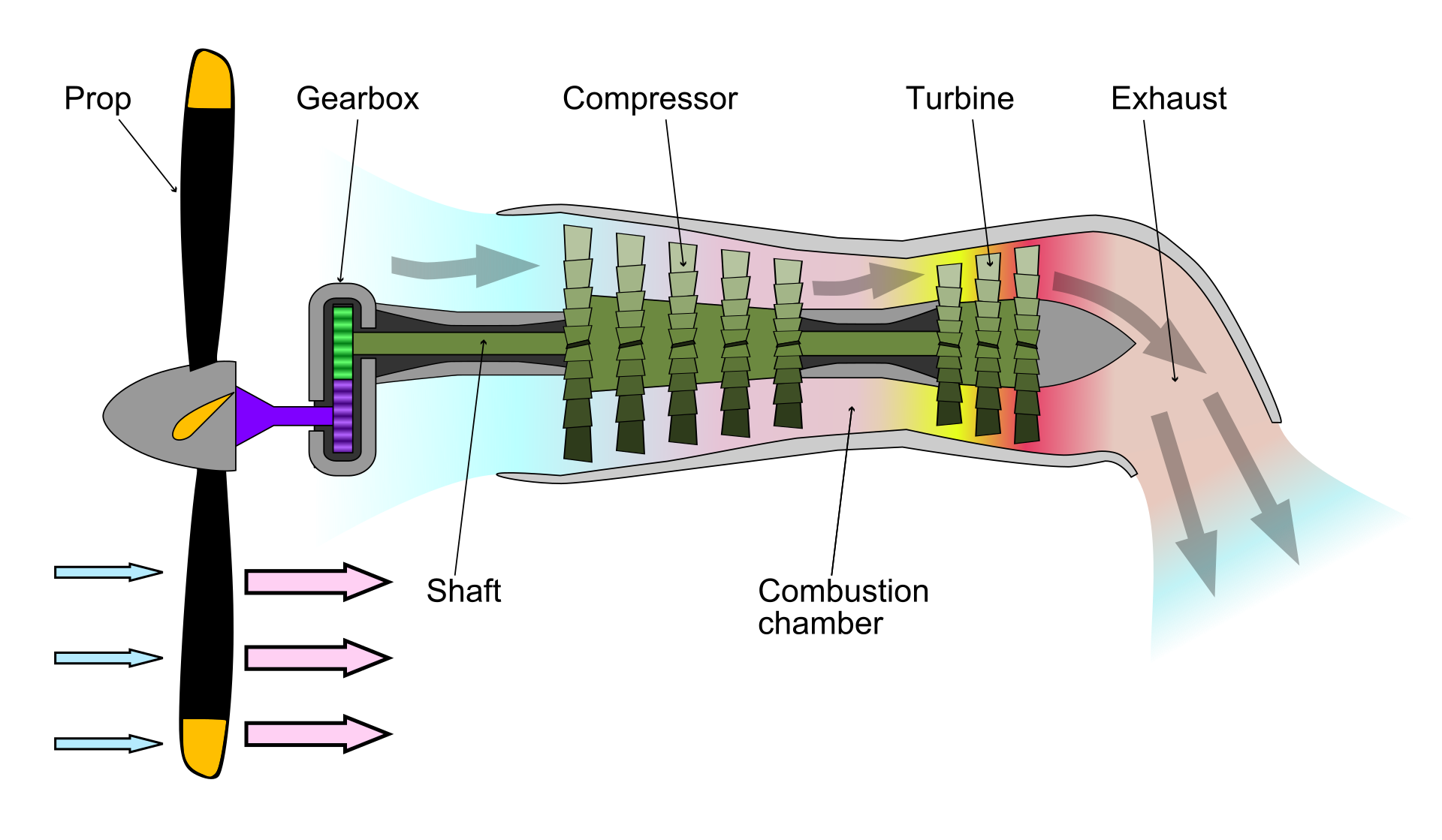
Gas turbine engines are also used in helicopters, but in this case, they rotate not the propeller, but the blade, and such engines are called turboshaft. Here’s a nice video demonstrating their operating principles:
Gas turbine (turboshaft) engines are also used in tanks (e.g., Abrams tanks).
Advantages of such engines include high power loading, easy startup even at low temperatures, the possibility to push the unit up from the “low ground” (high-pressure turbine is separated from the power turbine and the engine does not die when the caterpillar tracks are not moving).
Disadvantages include high engine price, complex maintenance, low acceleration response. There are quite opposing views on most specifics of gas turbine engines use for tanks, but we’re no experts here. :)
One of the engine features that strongly affect onboard equipment design is an uncontained separation of high-pressure compressor rotor parts. This happens in case of explosive rupture of an engine when the compressor and turbine blades are scattered in all directions.
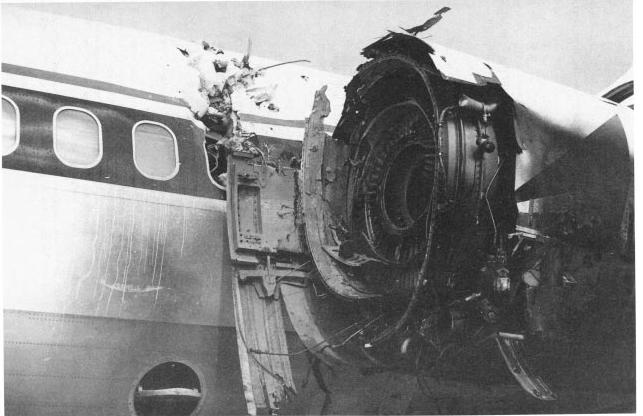
When evaluating consequences of such failure, the fragments are considered to have unlimited energy enough to break through any obstacles, cut any pipes and wires. To ensure a safe landing in case of such uncontained engine failure, electronics architects must provide for a backup for each critical wire, laid in a separate conduit that cannot be broken by the same fragment as the main wire.
Note for sensitive readers: In fact, engine designers do their best to avoid uncontained engine failure, and it’s very rare indeed. Even a large bird hitting the engine will not break it. However, aviation is a conservative industry and when we work on the architecture, we factor in scenarios for all potential risks.